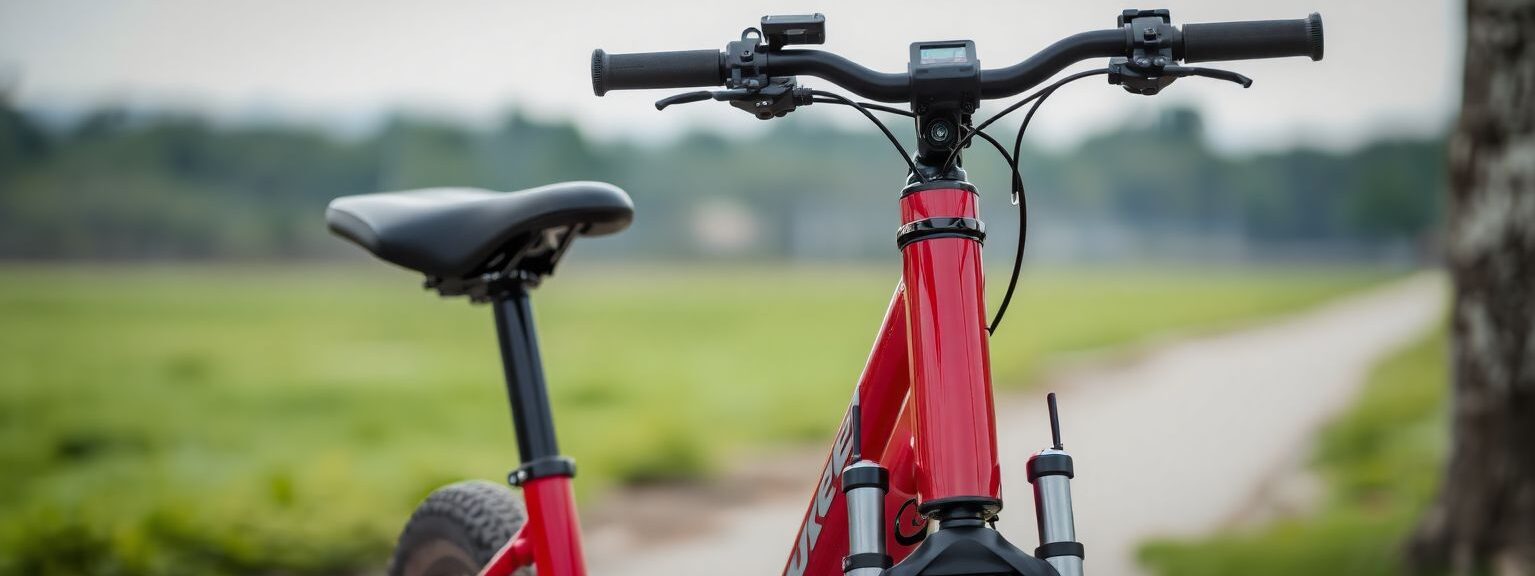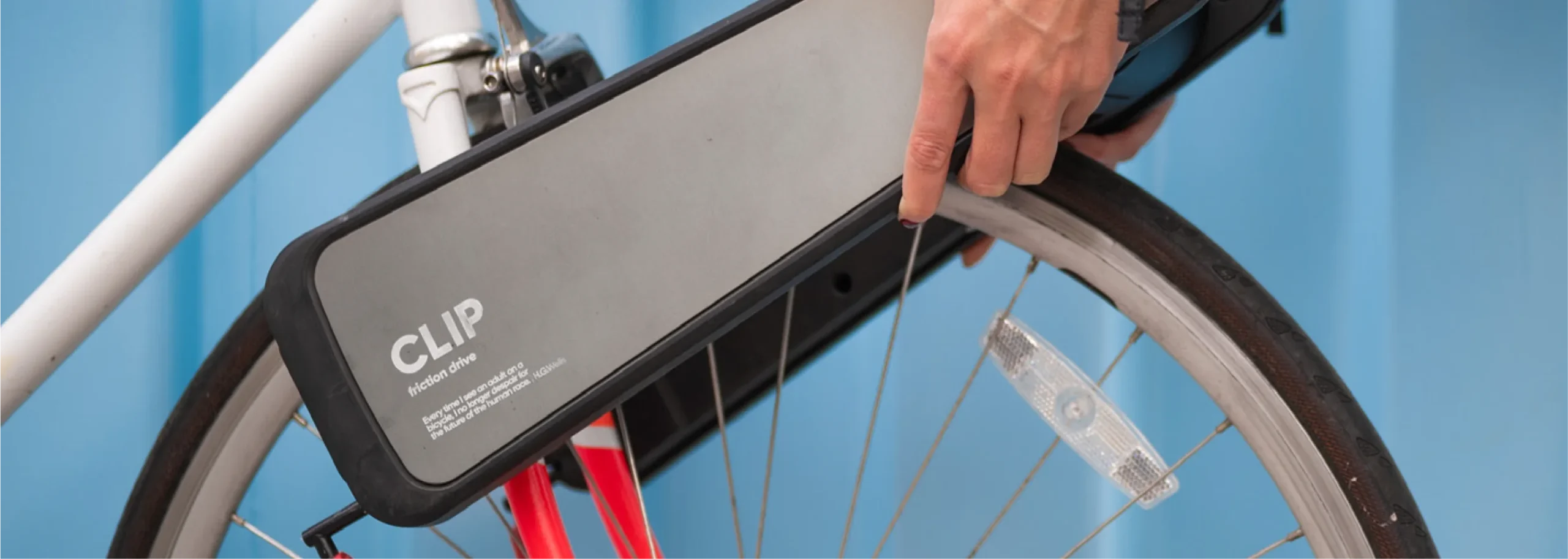CLIP Bike Converter Review: Is This Portable E-Bike Solution Worth It in 2025?
Looking for an affordable way to electrify your bike? Our hands-on CLIP review covers everything from installation to real-world performance. Find out if this portable converter is right for your commute.
My Journey with CLIP: From Skeptic to Daily User
When I first heard about CLIP, I was honestly doubtful. A portable device that magically transforms any regular bike into an e-bike? Sounds too good to be true. But after three months of daily use through Brooklyn’s varied terrain, I’ve developed some strong opinions about this little gadget that might help you decide if it’s worth your money.
What Exactly Is CLIP?
CLIP is basically a portable motor that attaches to your bike’s front wheel without any tools. Unlike bulky conversion kits that require an engineering degree to install, CLIP snaps on in seconds, giving your regular bike electric assistance up to 15 mph.
The concept is brilliantly simple: a friction drive unit makes contact with your front tire and provides that extra push we all sometimes need, especially when facing those dreaded uphill sections of your commute.
CLIP is the World’s Quickest Ebike Conversion Kit to make Old Bikes into E-Bikes
Installation: Genuinely Tool-Free (I Timed It!)
I was prepared for marketing exaggeration, but CLIP genuinely lives up to its “tool-free” promise. My first installation took just under 4 minutes, and now I can pop it on in about 30 seconds:
- Clip the main unit to your front fork
- Secure the handlebar controller
- Connect the two with the cable
- Press the red button and go
No wrenches, no screwdrivers, no complicated wiring. The design is incredibly intuitive – I’ve let friends try it, and they’ve all managed without instructions.
Real-World Performance: The Good and Not-So-Good
After logging over 200 miles with my CLIP Explorer model, here’s what actually matters:
The Good Stuff
- Portability is game-changing: I can remove it when locking my bike outside and carry it in my backpack. At under 10 pounds, it’s lighter than most laptop bags.
- Battery charges surprisingly fast: About 45 minutes gets me from empty to full.
- Regenerative braking actually works: Going downhill partially recharges the battery – I’ve gotten nearly a mile of extra range this way.
- The boost button is addictive: That little red button on the handlebar delivers an instant surge of power that’s perfect for starting from a stop or tackling sudden inclines.
The Reality Check
- Range is limited: The advertised 12-mile range on my Explorer model is technically accurate, but only with minimal boost usage and flat terrain. My typical urban commute with hills drains it in about 8-9 miles.
- Rainy day limitations: While CLIP has survived light drizzle, the company explicitly warns against medium to heavy rain. This has been problematic during spring showers.
- Not for serious hills: On steeper inclines (anything above 10% grade), you’ll definitely feel the difference between CLIP and a purpose-built e-bike. It helps, but doesn’t eliminate the effort.
Compatibility: Will It Work With Your Bike?
Before getting excited, check if your bike is compatible. CLIP works with:
- City, road, and hybrid bikes
- Front wheel sizes from 26″ to 28″
- Most standard fork stems
It won’t work with:
- Bikes with suspension forks (sorry, mountain bikers)
- Some specialty frames with unusual geometry
The company offers a helpful compatibility checker on their website, which I’d strongly recommend using before purchase.
Price Point: How CLIP Compares to Full E-Bikes
Let’s talk money – because this is where CLIP really shines. While decent e-bikes start around $1,500 and quickly climb above $2,500, CLIP offers:
- CLIP Commuter (6-mile range): $499
- CLIP Explorer (12-mile range): $599
For someone like me who wasn’t ready to commit thousands to an e-bike lifestyle, CLIP provided an affordable entry point. It’s also perfect for apartment dwellers who don’t have space for a full-sized e-bike.
The Competition: CLIP vs. Swytch and Others
While researching, I also considered Swytch, CLIP’s main competitor. Swytch offers longer range (up to 60 miles with upgrades) and better water resistance (IPX6 rated), but requires more installation time and isn’t as easily removable.
The CHEAPEST Legal eBike Conversion Kit – Swytch Go First Look
If maximum range and all-weather performance are your priorities, Swytch might be better. If portability and ease of use matter most, CLIP wins hands down.
What’s New: The BOLT System
CLIP recently launched their BOLT system in March 2025 – a $250 conversion option aimed at broader accessibility. While primarily distributed through B2B channels, it represents a promising direction for making e-cycling more affordable.
Is CLIP Right For You? My Honest Take
After using CLIP daily, here’s who I think should buy it:
Perfect for you if:
- You want e-bike benefits without the full price tag
- Your commute is under 8 miles each way
- You need something portable for a small apartment
- You want to keep using your existing beloved bike
Look elsewhere if:
- You regularly ride in rainy conditions
- Your commute includes serious hills or is longer than 10 miles
- You need something that’s maintenance-free (the friction drive needs occasional adjustment)
Turn Any Bike Into An E-Bike – CLIP Friction Drive Unboxing & Review
Final Thoughts: A Stepping Stone to E-Mobility
CLIP isn’t perfect, but it’s an ingenious solution for urban riders who want electric assistance without committing to a full e-bike purchase. It’s opened up parts of my neighborhood I previously avoided due to hills, and significantly reduced my commute sweat factor.
For me, it’s been worth every penny – though I’m realistic about its limitations. If you’re on the fence about e-bikes generally, CLIP offers an affordable way to test the electric waters before diving into a more expensive commitment.
Would I recommend it? Absolutely – for the right rider with the right expectations.
Have you tried CLIP or similar e-bike conversion systems? I’d love to hear about your experiences in the comments below!

